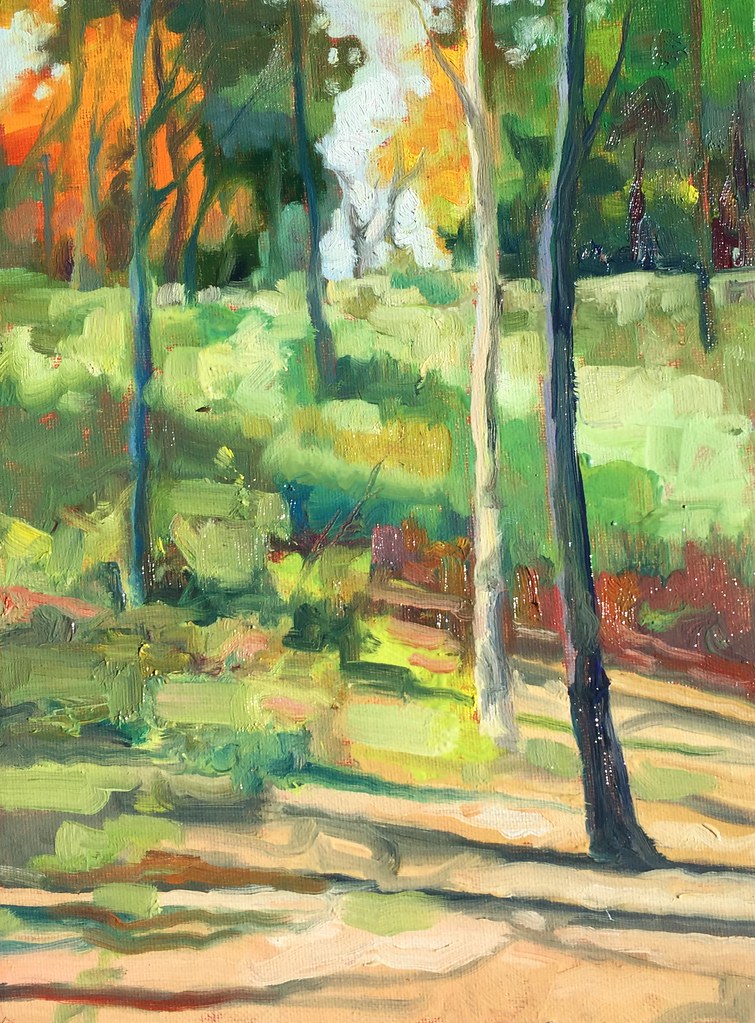
1 November, 2015. A last gasp of summer weather on the first day of November. Swarms of gnats were blown around the park in the gusting wind, and a few of them managed to find their way into the wet paint. (Once dry, their little corpses can just be brushed off the surface.)
Seemingly empty of anyone but me, there was not a car, a hiker, a baseball player, or a fisherman to be seen. Even in such a setting, standing in front of canvas seems to be some sort of people magnet. I watched as a four-wheeler made a beeline toward me from across the fields. One of the park maintenance guys wanted to see what I was “photographing” and he was happily surprised to discover I had a painting on the tripod, rather than a camera. (Fountain Bluffs Park, Clay County, Missouri. Oil on 12 x 9 inch panel.)

I’ve been asked before about the pochade box I use, so I’ll share a little about my kit here. Although I’ve got a couple of French easels I’ve never found them especially useful in the field – they’re bulky, hold one very exposed canvas, and almost never seem to want to adequately adjust to my needs. So about fifteen years ago I began to research pochade boxes – compact artist kits that allow one to carry their studio with them into the field. One of those I discovered was the Open Box M design, a three-part system comprised of a folding palette (pictured above), a size-adjustable panel holder that will hold four wet panels, and the exterior box. At the time, the boxes were handcrafted and quite attractive. I believe the original designer passed away a few years later, but looking at the website it appears the craftsmanship is still superior – although very spendy. I’m also not seeing the original exterior box on their website…hopefully I simply overlooked it, because it’s the part that organizes the entire kit.
The folding palette is a nice, simple bit of engineering. As you can see in the photograph, the lid lifts up to reveal a paint mixing surface. The lid has spring-adjustable prongs that hold the panel firmly in place while painting. A couple of strategically located tighteners on brass arms (not pictured) make adjusting the angle a snap. And an extra detachable “wing” provides the artist with a little additional flat space for brushes, tubes, etc. The palette attaches to a tripod by means of a tripod socket on the underside. Frankly, this is the most useful/functional field kit I’ve used for oils. The caveat here is that I was fortunate enough to get a kit that worked for me several years ago and never felt the need to test anything else out – there may be kits out there that work far better for someone else’s needs; this does the job for me.





